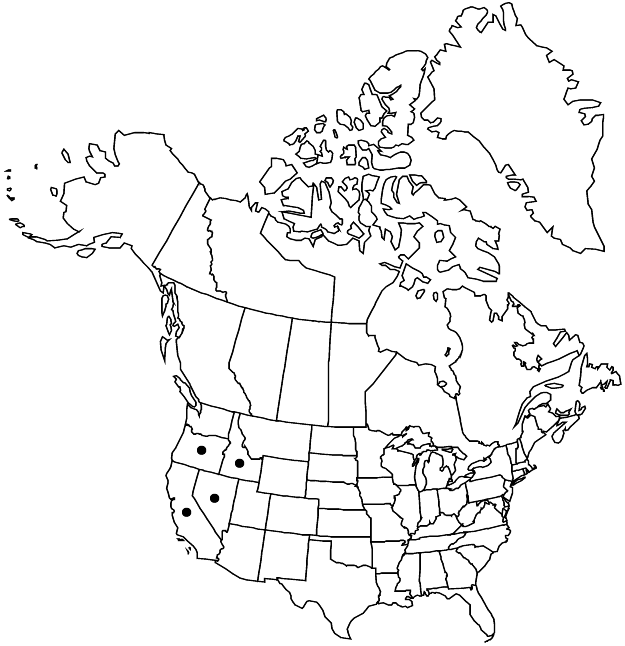Eriogonum umbellatum var. modocense
Eriogonum, 110. 1936.
Herbs, mats, 1–3.5 (–4) × 1–3 (–5) dm. Aerial flowering-stems erect, 0.7–2.5 dm, usually tomentose, without one or more leaflike bracts ca. midlength. Leaves in somewhat compact rosettes; blade usually elliptic, (0.3–) 1–1.5 (–2) × 0.1–1 (–1.2) cm, densely tomentose abaxially, mostly glabrous and green adaxially, margins plane. Inflorescences umbellate; branches 3–10 (–15) cm, usually tomentose, without a whorl of bracts ca. midlength; involucral tubes 2–3 mm, lobes 2–3 mm. Flowers 4–8 mm; perianth bright-yellow.
Phenology: Flowering Jun–Sep.
Habitat: Sandy to gravelly flats and slopes, mixed grassland and sagebrush communities, pinyon and/or juniper and montane conifer woodlands
Elevation: (200-)600-2300(-2500) m
Distribution

Calif., Idaho, Nev., Oreg.
Discussion
Variety modocense is the common form of the species encountered mainly east of the Cascade Range from central Oregon (Crook, Deschutes, Douglas, Grant, Harney, Jackson, Jefferson, Josephine, Klamath, Lake, and Malheur counties) to northern California (Butte, Lassen, Modoc, Shasta, and Siskiyou counties). It is found less frequently in northernmost Nevada (Humboldt and Washoe counties) and southwestern Idaho (Camas, Gem, Goodding, Owyhee, and Twin Falls counties). In the northern Sierra Nevada, var. modocense merges with var. nevadense. In California and Nevada, plants now assigned here generally have gone under the name Eriogonum umbellatum var. polyanthum in the pre-1989 literature.
Selected References
None.
Lower Taxa
"dm" is not declared as a valid unit of measurement for this property."dm" is not declared as a valid unit of measurement for this property."dm" is not declared as a valid unit of measurement for this property."dm" is not declared as a valid unit of measurement for this property.
